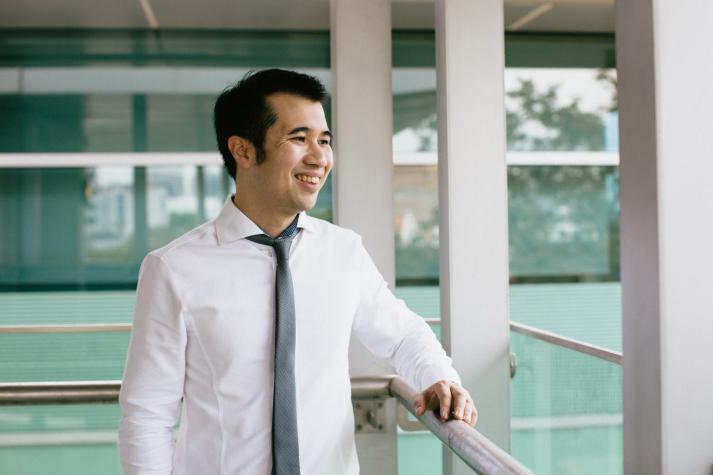
As the pace of globalisation increases, SMU Assistant Professor Hoon Chang Yau argues for the need to move away from an essentialist view of identity to one that is aligned with the complexities of the 21st century.

Photo Credit: Darren Yau
By Dora Yip
SMU Office of Research (4 Nov 2013) – In a highly globalised world, a person’s identity is most questioned when a difference is felt, especially when one moves from being part of the majority to a minority group.
From the time he was an undergraduate student in Australia, Assistant Professor Hoon Chang Yau from the Singapore Management University (SMU) School of Social Sciences had always been fascinated by the concept of “the other” and how it relates to identity. Indeed, his research interests – the Chinese diaspora; contemporary Indonesia; identity and cultural politics; ethnic and racial studies; and multicultural education and religion – are all related in some way to identity and minority issues.
Ethnic Chinese identity in Indonesia
Born in Sarawak, Malaysia to a Chinese-speaking family and raised in Brunei, Professor Hoon never questioned the notion of “Chineseness” until he moved to the Australian city of Perth. There, he met many Chinese Indonesian students who mostly spoke Javanese or a regional language and identified themselves as Indonesian. “However, they didn’t seem very Chinese at all,” he recalls.
In particular, he recounts how a three-week holiday to Indonesia, where he stayed at a Chinese Indonesian friend’s family home, raised many questions. The family identified themselves as Chinese yet they ate Indonesian food, spoke Bahasa Indonesia, dressed like their city-dwelling pribumi (native Indonesians) counterparts, and didn’t have any identifying ethnic features in their house, like ancestral altars.
Intrigued, Professor Hoon set out to unpack the complex meaning of “Chineseness” in post-Reformasi Indonesia, against the backdrop of the fall of Suharto and anti-Chinese riots of May 1998. His own personal experience as an ethnic Chinese Southeast Asian, coupled with his ability to speak fluent Mandarin and Bahasa Indonesia, put him in a unique half-insider, half-outsider position that allowed him to traverse the two communities. His groundbreaking book, “Chinese Identity in Post-Suharto Indonesia: Culture, Politics and Media”, provides a comprehensive view of ethnic and religious identity in Indonesia, and has since become a defining resource in the study of ethnic Chinese Indonesians.
“To understand the ethnic Chinese in Indonesia, I had to study religion in general, which led me to this whole web of looking at identities, religion and ethnicity,” he says. For example, Professor Hoon found that ethnic Chinese Indonesians sent their children to private Christian schools, where exhorbitant school fees acted as a deterrent to pribumi families.
With liberalisation and the ban of “Chineseness” lifted, the Indonesian Chinese community is currently experiencing a resurgence of Chinese cultural expression. Although the possibilities for re-sinicisation may be exciting, Professor Hoon has observed the inevitable scenario of older generations imposing their notions of Chineseness on younger generations. He has also been invited to give talks in Indonesia on several occasions by Chinese clan associations and schools on the topic of Chinese identity. “I do this out of goodwill; it is my way of giving back to the field,” he says.
On the topic of giving, Professor Hoon’s work on the Chinese diaspora has also seen him collaborating extensively with Professor Thomas Menkhoff from SMU’s Lee Kong Chian School of Business on Chinese philanthropy. Their research examines the cultural patterns for the giving behaviour of Chinese entrepreneurs.
“We found that, especially among overseas Chinese, there was a very strong sense of self-help. A lot who made it have given back to education, which is regarded as an important stepping stone for upward mobility,” he says. This year, they co-edited a book called “Catalyst for Change: Chinese Business in Asia”.
A polarised post-9/11 world
Professor Hoon’s work is also strongly informed by the 9/11 new world order that is characterised by an increasingly polarised public. “Religion has become a fault line in the post-9/11 world. With so much anxiety surrounding religious identity, we have moved from secular discourse to one drawn along religious and national borders,” he says.
While popular politics forces people to choose between two extreme options, in reality, a huge spectrum of options exists. “My work is to challenge this false dichotomy, by probing, understanding and documenting the intersection between these two poles.”
In this new normal, the resurgence of religion has rendered inadequate the Western model of multiculturalism, he says. Western attitudes regarding the practice of religion relies on the dominance of a secular world view and private observation of religion. This model of multiculturalism, Professor Hoon explains, was designed to accommodate migrants from a different culture but not those who display their religion publicly. When states are unable to engage with their religious minority, they retreat from multiculturalism and adopt a model of assimilation or worse still, segregation.
“In Europe for example, multiculturalism is widely seen as a failed policy because instead of uniting migrants with the local population, it has segregated them and allowed them to live in their own enclaves in the name of political correctness,” he says.
Professor Hoon sees a strong need to put religious discourse back into multiculturalism. “I want to look at Indonesia as a case study of multiculturalism and understand how its policies take religion into account. If I can conceptualise a model based on Indonesia, we can use it to show other countries how multiculturalism can work,” he says.
True to his calling, Professor Hoon’s passion for understanding minority issues has seen him taking on the role as a founding member of the Committee for Diversity and Inclusion at SMU. Formally established at the start of 2013, the committee seeks to ensure that the university accommodates people across all spectrums, whether their difference is in terms of disability, ethnicity, religion, gender identity or sexual orientation.
“No one should be denied an opportunity at SMU because they are different,” says Professor Hoon, whose new role as an advocate of minority groups at SMU seems to fit him like a glove.
See More News
Want to see more of SMU Research?
Sign up for Research@SMU e-newslettter to know more about our research and research-related events!
If you would like to remove yourself from all our mailing list, please visit https://eservices.smu.edu.sg/internet/DNC/Default.aspx

